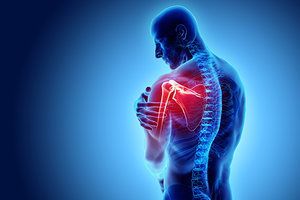Whether you accept it, avoid it or live somewhere in between, insurance coverage has become a defining issue for our profession. Patients increasingly expect to use their benefits, practitioners want to be compensated fairly for their time and expertise, and the system itself remains – at best – fragmented. The encouraging news is that coverage has expanded in meaningful ways. The challenging news is that reimbursement, across the board, remains inadequate.
Helping Patients With Frozen Shoulder
Frozen shoulder (adhesive capsulitis) is a condition in which the soft-tissue capsule that surrounds the glenohumeral (shoulder) joint begins to stiffen, causing pain and decreased range of motion. The shoulder is a ball-and-socket joint made up of three bones: the humerus, scapula and clavicle. The head of the humerus fits into the socket in the shoulder blade, where a strong connective tissue, called the shoulder capsule, surrounds the joint. Synovial fluid lubricates the shoulder capsule and the joint to aid in range of motion.
In frozen shoulder, evidence shows synovial inflammation and a dense matrix of type I and III collagen laid down by fibroblasts in the joint capsule. Increased growth factors and cytokines have been biopsied in patients, which indicate it also involves an inflammatory condition. The scar formation greatly intrudes upon the space needed for movement within the joint.
Presentation & Causation
Frozen shoulder comes on gradually, with signs and symptoms worsening over time. There are three main stages in which this occurs. The first is called the freezing stage, which occurs when any movement of the shoulder causes pain and range of motion becomes limited. This stage typically lasts from six weeks to nine months. The frozen stage comes second, in which pain may start to diminish. However, the shoulder becomes stiffer and more difficult to use. Finally is the thawing stage. In this stage, range of motion begins to improve and the pain can subside. This stage usually occurs 1-3 years after the shoulder becomes frozen.

Although the most recognized pathology is cytokine-mediated synovial inflammation with fibroblastic proliferation, the actual cause of frozen shoulder is not fully understood, although there are some identified risk factors. Diabetes patients have a higher risk of developing frozen shoulder although the reason is not known. These patients typically have a greater degree of stiffness for longer periods before the thawing stage occurs. Hypothyroidism, hyperthyroidism, Parkinson's and cardiovascular disease are all associated with frozen shoulder.
Immobilization is also thought to play a big role in the development of frozen shoulder: when the shoulder is immobilized for long periods, such as in the case of an injury like a fracture or surgery (e.g., mastectomy).
Wellness Recommendation
The wellness recommendation for frozen shoulder includes alternating between two different Chinese herbal patches. The first patch consists of myrrh, Himalayan teasel root, Chinese angelica, and 12 other Chinese herbs.* The second Chinese herbal patch consists of an additional five ingredients compared to the first patch (clam shell, nacre, oyster shell, pearl and sea ear shell, as well as a kidney yin internal formula containing American ginseng, penta tea and reishi mushroom.
Based on clinical experience, the first Chinese herbal patch resolves inflammation and helps the healing of the joint capsule by increasing local blood flow and local lymphatic circulation, and accelerating local biological activities geared toward healing. The second Chinese herbal patch helps to break down the dense matrix of collagen fibers and scar tissue.
Many of the herbal ingredients utilized have been found to increase local nitric oxide production, which enhances the recovery of capillaries and increases their diameter, allowing capillaries to open up and facilitate enhanced blood circulation. The herbal ingredients also have been shown to reduce pro-inflammatory cytokines and other inflammatory mediators, which aids in healing and increasing range of motion. The Chinese herbal patch also accelerates local biological activities to expedite healthy collagen regeneration and reverse cellular damage.
The kidney yin internal formula functions to open the smallest blood vessels, enhancing whole-body microcirculation and accelerating healing. The enhanced systemic microcirculation also improves nutrient absorption from the digestive tract to assist in healing.
Patients should experience improvement within the first week of the protocol, and significant improvement with sustained results within one month.
Sample Case Study
Successful Resolution of Frozen Shoulder Pain — Teri Langford, DC, Texas
An 86-year-old male entered the office with frozen shoulder syndrome. This man was a health care professional and was actively practicing. The pain was increasing and he was able to work only by holding his right arm up with his left hand and having the tools handed to him.
I recommended large herbal patches which were applied to the anterior compartment of the shoulder. He also took a kidney yin herbal internal formula to increase microcirculation. He noticed improvement immediately. A total of six patches were used and the shoulder now has full range of motion and no pain after treatment.
*Other herbs (first patch): Cassia bark; Chinese angelica; Chinese asfetida; Chinese silkvine root-bark; common flowering quince fruit; doubleteeth pubescent angelica root; incised notopterygium rhizome or root; lesser galangal rhizome; pine nodular branch; prepared Ksnezoff monkshood root; red peony root; and sappan wood.



